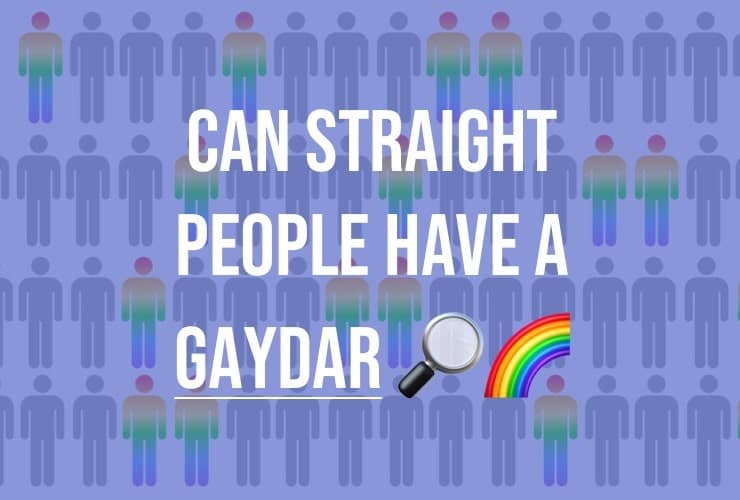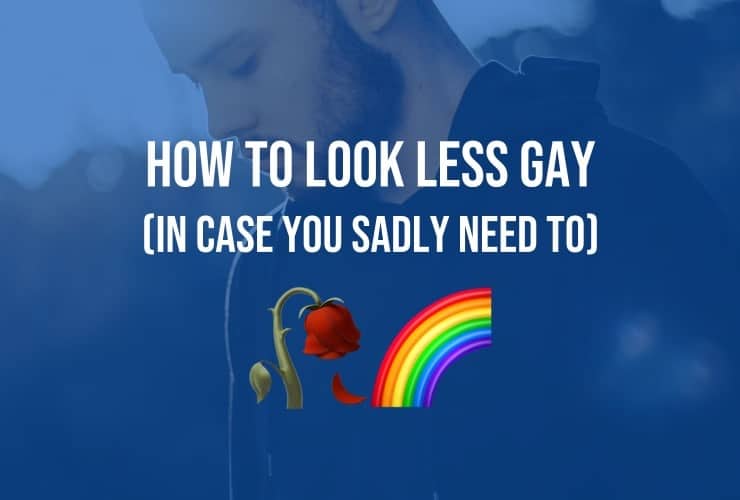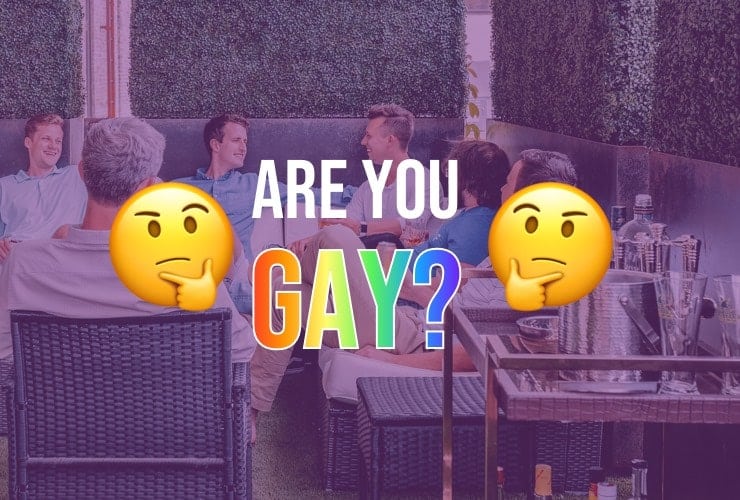You might have heard a non-gay friend say they have an incredible gaydar, or you might be straight and think you have a great gaydar. Maybe you are gay and think you have a good gaydar or want to improve yours– but what even is a gaydar and does it exist? A gaydar is basically a term that describes the ability to identify someone as gay, lesbian, or bisexual based on non-verbal cues, behaviour, or appearance.
The term and idea of a gaydar is pretty gimmicky but people claim to have ‘a good sense’ when it comes to spotting if someone is homosexual. However, having a gaydar is not a sure thing. It’s not reliable because gaydars are based on stereotypical cues, behaviours or appearances. You might wonder, do only gay people have the ability to have a gaydar? Is there a way to know someone’s sexuality without asking?
In this article we will talk about the stereotypical and common gaydar “elements,” the science behind the gaydar, and if it is even possible to improve your gaydar yourself.
The (Stereotypical) Gaydar
Sexuality is a very complex and fluid thing. It can be nearly impossible to know someone’s sexuality based on observations alone. However, there are some traits that are more prevalent amongst gay people than amongst straight people.
People often try to use these commonalities to create their own gaydar. Some of these stereotypes can be helpful, if people are trying to show or signal their sexuality to others, but sometimes they can be hurtful when they are not intentional or are simply a sign of personal expression, not sexuality. That being said, there are a few things that can inform a ‘gaydar.’
One trait that people often use to gauge someone’s sexuality is fashion and style. For example, wearing flamboyant or trendy clothing can be an indication of someone’s sexuality. This assumption is based on the stereotype that gay people tend to be more fashionable than straight people. Social media and t.v. often suggest that gay folks are often more put together than heterosexual people. There is an idea that gay men are more stylish or dress slightly feminine compared to heterosexual men who often dress more masculine and relaxed. While this could be the case, it is not always so predictable or reliable.
Another way that people will try to unpack someone’s sexuality is through body language and gestures. There is a stereotype that gay men will make their wrist limp, so people might be on the look-out for this specific gesture. Another body language stereotype suggests that gay men will sometimes move in a more feminine or elegant manner. This type of outward behavior can be an indication of sexual preference, but again, not always.

Often people try to use voice and speech to indicate whether or not someone is gay. People might hone in on what specific language people are using or the things they are talking about. For example, there is a stereotype that gay men tend to be smooth talkers, extremely complementary, and talk more about social subjects. These talking points could indicate someone’s sexuality or it could simply be their personality.
Finally, people will look to social interactions and hobbies. The way people spend their time might give an indication about their sexuality. People might think straight men are more into sports, video games and drinking beer, while gay men are more into staying up to date with reality t.v. shows, the biggest pop stars or cooking. However, there are plenty of men who are gay that love sports and plenty of straight men who love cooking and pop stars.
What people use as their gaydar could be correct, but again, it could just be a stereotype.
Is It Possible to Improve Your Gaydar?
Can you actually increase your gaydar and if so, what would that actually look like? If a gaydar does exist and you can predict what someone’s sexuality is, how can you make it better? The only way to get a better understanding of who is gay and who is not, therefore improving your gaydar, is to be immersed in the queer community.
Spending lots of time around gay people will help you understand and pick up on cues that are less “stereotype-y” and are more relevant to the gay community. For example, if you are a big fan of gay reality shows like Rupaul’s Drag Race you will find that gay people use words that are often used in these shows and nowhere else. If you have never seen these kinds of shows you wouldn’t be able to pick up on those specific words.
Something else that helps by being in the queer community is that often, stereotypes change and that change happens first within the culture. Fashion for example– I see more and more gay men ditching their skinny clothing and wearing loose fitting clothing. The recent style is to look more tough (think mullets, mustaches, neck tattoos). Someone who is not up to date with a community’s latest fashion trends might not spot this change as fast.

Does Research Support That Gaydars Exist?
Is there any scientific evidence that suggests we can accurately predict who is gay and who isn’t? There has been research on this very subject, where studies looked to see if people were able to predict sexual orientation based on superficial evidence such as tone of voice and facial features.
There is some evidence that indicates individuals may be able to perceive differences in vocal characteristics between gay and heterosexual individuals. A study published in the journal Archives of Sexual Behavior in 2018 found that listeners were able to identify the sexual orientation of men based on voice alone with accuracy slightly above chance. For example, gay men more often tend to exhibit higher pitched speaking tones and less “breathy” voices.
And when it comes to facial features, some studies suggest that people may rely on certain facial features to make judgments about someone’s sexual orientation. One study published in the journal PLOS ONE in 2008 found that participants were able to identify sexual orientation with above-chance accuracy by looking at cropped facial images. For example, gay men tend to have more convex cheeks, shorter noses, foreheads more tilted back while lesbians tend to have larger jaws.
While both of these studies might lead one to suggest that people may be able ‘with a slightly above chance’ accuracy to guess who is gay and who isn’t, it is still a stretch to think that people can tell someone’s sexuality just based on voice or facial features alone.
Will Artificial Intelligence Be Able To Tell Who Is Gay or Not?
Now, if humans have the possibility to have a gaydar, can AI? There have been more and more articles released claiming that AI will be able to tell someone’s sexual identity. While technology cannot identify someone’s sexual orientation, it can find subtle patterns that gay people have in common.
Though there is proof that AI is able to sometimes pin-point someone’s sexuality, it is still very inaccurate and will likely never be accurate to use. In many ways, it is similar to humans’ accuracy and ability. Since humans have been unable to accurately predict 100% of the time if someone is gay, a computer is never going to be able to.
So with AI and humans, It is nearly impossible to tell what someone’s sexuality is based on a superficial understanding of the person alone.
Why Do We Even Care About Someone’s Sexuality?
We should create a more open society where people can be who they are and do what they like. Straight men shouldn’t be ashamed or afraid to do feminine things because they might be perceived as gay, and we shouldn’t assume that a masculine gay guy who is really good at sports is automatically straight. These are the dangers of trying to improve upon a gaydar.
Stereotyping can be helpful, if it brings us closer to the people we want to hang out with or want to date. But oftentimes, stereotyping can be dangerous. Being able to tell who is gay can reinforce prejudice and discrimination or its inaccuracy can be exclusive or offensive.
Using a ‘gaydar’ is not foolproof. It is not always correct and generalizations can hurt people. It can be awkward, at best, if we assume someone is gay and they or not and it can be damaging, at worst, to assume someone’s sexuality is something it isn’t– it’s dismissive and dehumanizing.
Conclusion
Sexuality is so complex and fluid, and finding a common denominator that all queer people have, whether physically or mentally, would be impossible.
So, while you might want to spend more time with a queer community and by doing so, be able to pick up on more clues to someone’s sexuality, you can never be 100% sure unless you ask them or they tell you. If you want to ask someone about their sexuality, read our article here.
In general, people cannot predict other people’s sexuality based on stereotypes alone. There are as many ways to be gay as there are gay people. There is no one way to be gay. Embrace all the ways there are to exist!







